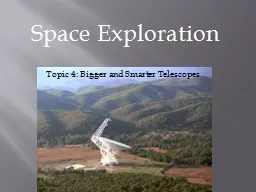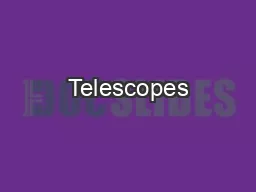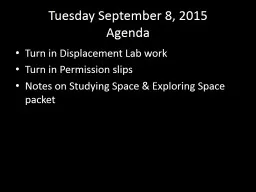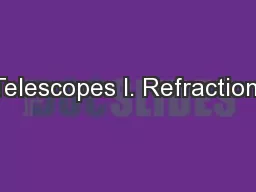PPT-Space Exploration Topic 4: Bigger and Smarter Telescopes
Author : briana-ranney | Published Date : 2018-03-18
History In 1773 Herschel invented a large reflecting telescope and discovered Uranus This was the first new planet In late 1800s Kuiper found methane gas in Saturns
Presentation Embed Code
Download Presentation
Download Presentation The PPT/PDF document "Space Exploration Topic 4: Bigger and Sm..." is the property of its rightful owner. Permission is granted to download and print the materials on this website for personal, non-commercial use only, and to display it on your personal computer provided you do not modify the materials and that you retain all copyright notices contained in the materials. By downloading content from our website, you accept the terms of this agreement.
Space Exploration Topic 4: Bigger and Smarter Telescopes: Transcript
Download Rules Of Document
"Space Exploration Topic 4: Bigger and Smarter Telescopes"The content belongs to its owner. You may download and print it for personal use, without modification, and keep all copyright notices. By downloading, you agree to these terms.
Related Documents














